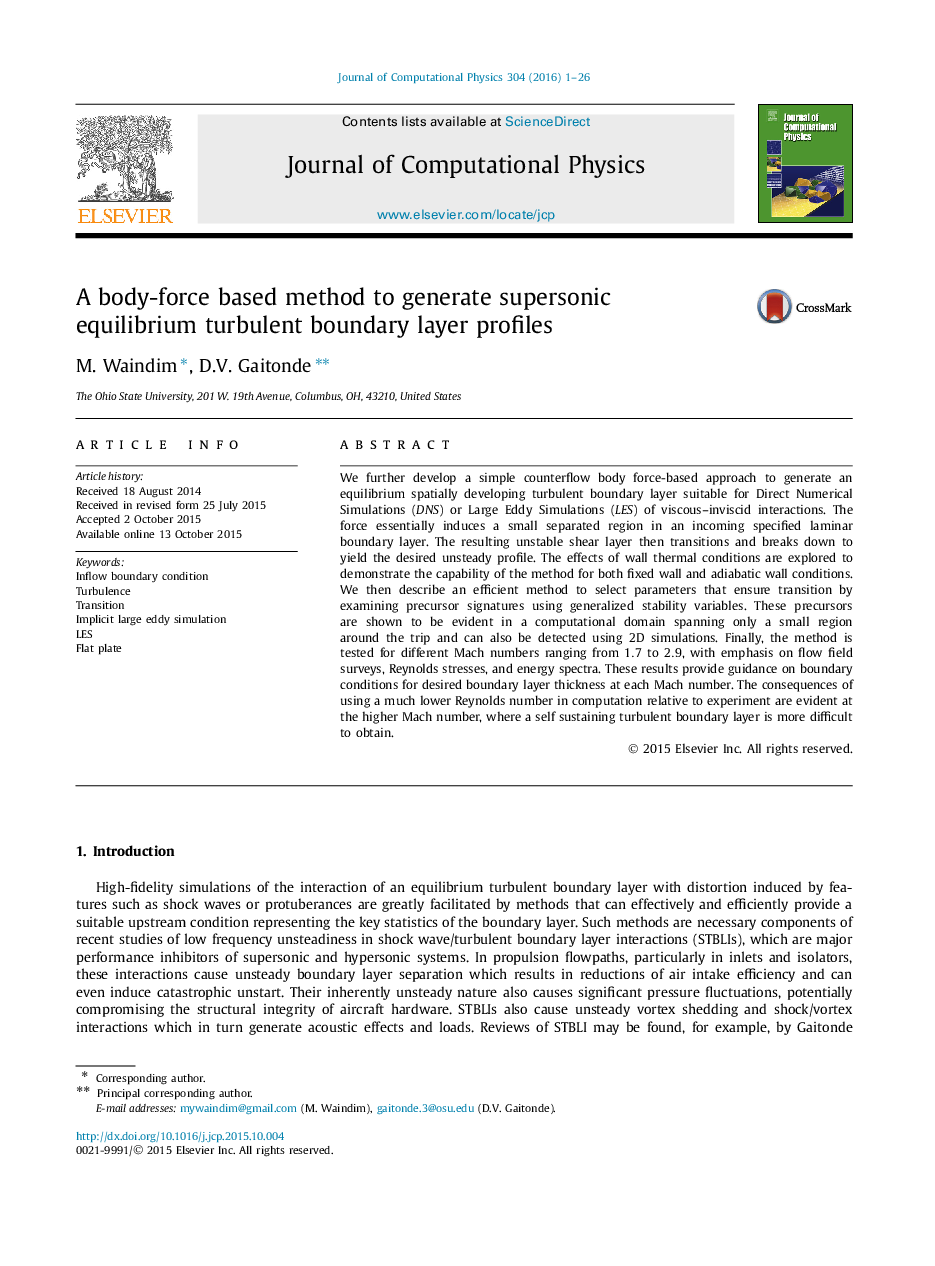| Article ID | Journal | Published Year | Pages | File Type |
|---|---|---|---|---|
| 517978 | Journal of Computational Physics | 2016 | 26 Pages |
We further develop a simple counterflow body force-based approach to generate an equilibrium spatially developing turbulent boundary layer suitable for Direct Numerical Simulations (DNS) or Large Eddy Simulations (LES) of viscous–inviscid interactions. The force essentially induces a small separated region in an incoming specified laminar boundary layer. The resulting unstable shear layer then transitions and breaks down to yield the desired unsteady profile. The effects of wall thermal conditions are explored to demonstrate the capability of the method for both fixed wall and adiabatic wall conditions. We then describe an efficient method to select parameters that ensure transition by examining precursor signatures using generalized stability variables. These precursors are shown to be evident in a computational domain spanning only a small region around the trip and can also be detected using 2D simulations. Finally, the method is tested for different Mach numbers ranging from 1.7 to 2.9, with emphasis on flow field surveys, Reynolds stresses, and energy spectra. These results provide guidance on boundary conditions for desired boundary layer thickness at each Mach number. The consequences of using a much lower Reynolds number in computation relative to experiment are evident at the higher Mach number, where a self sustaining turbulent boundary layer is more difficult to obtain.
